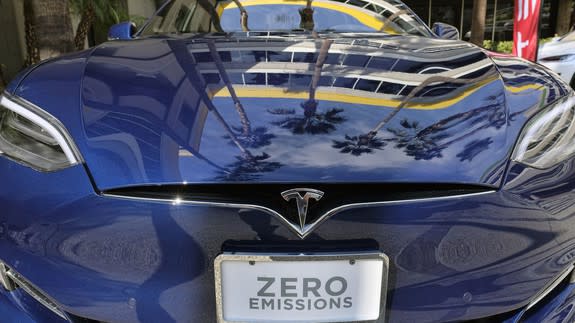Tesla cleared in investigation of fatal Autopilot crash

Last year, Tesla's Autopilot tech suffered its first casualty when a Florida man was killed while using the semi-autonomous driving system. Now the National Highway Traffic Safety Administration (NHTSA) has completed its investigation of the incident and says it wasn't Tesla's fault.
SEE ALSO: Modified Tesla Model S goes from 0-62 mph in 2.1 seconds
Joshua Brown, a Tesla-enthusiast who had once claimed the tech saved his life, was killed when his Model S drove underneath a white tractor trailer with Autopilot enabled.
The crash sparked a NHTSA investigation, along with calls from groups like Consumer Reports demanding that Tesla rename the feature and disable it to avoid future incidents.
Notably, while the name of the feature infers full autonomy, it is specifically not a completely self-driving car. The driver was reportedly speeding and possibly watching a Harry Potter movie on a portable DVD player when the crash occurred, which might have distracted him during the fatal event.
Today, the U.S. Department of Transportation’s National Highway Traffic Safety Administration (NHTSA) held a media briefing related to the Tesla investigation. Bryan Thomas, Communications Director, hosted the briefing.
Thomas announced the NHTSA is closing the preliminary evaluation of the incident, concluding that Telsa was not at fault. The Administration evaluated the full use of the automated system and concluded that a "safety-related defect trend is not necessary."
Tesla is under no active NHTSA investigations after today. According to Thomas, the automaker was "fully cooperative" throughout the investigation, which enabled the report to be concluded fairly quickly.
Elon Musk shared the news soon after the NHTSA made its announcement.
Final report on Autopilot issued by @NHTSAgov is very positive https://t.co/KsOZSrr3l9
— Elon Musk (@elonmusk) January 19, 2017
The investigation wasn’t focused on the root cause of the May 7 crash — while tragic, it was determined that driver error was at fault through other means. The NHTSA launched this probe to determine if there was a wider safety defect apparent with the system itself.
Along with the Autopilot system, the NHTSA examined Teslas Automatic Emergency Braking (AEB) system and the potential "human-machine interface issues related to Autopilot operating mode." Data from other crash incidents from drivers using Autopilot (which Thomas estimated to be in the "dozens," although only one other has resulted in serious injuries) and the updates Tesla has pushed over the air to its software were also considered in the report.
While Autopilot has been declared free of defects at the time of the crash (and acknowledged by the NHTSA to be greatly improved since the incident due to those system updates), the challenge of educating drivers about safe Autopilot usage remains a point of concern.
Tesla's Autopilot system falls under the Level 2 category of automation under the NHTSA's Federal Automated Vehicles Policy guidelines. This means it has an "an automated system on the vehicle [which] can actually conduct [emphasis theirs] some parts of the driving task, while the human continues to monitor the driving environment and performs the rest of the driving task."
In other words, drivers can't just depend on the Autopilot like a chauffeur. The problem is, some consumers may see the prefix "auto" and assume that means they can just let the car do the driving.
According to Thomas, the biggest challenge for Tesla (and similar systems from other automakers) is how to educate their consumers about the best, safest ways to use the high-tech features in their cars. “It’s not strong enough to just put in the owner’s manual and hope that drivers read and follow that,” he said.
While the announcement closes this chapter on Autopilot for Tesla, it opens another for the new age of distracted — or to be more accurate, completely inattentive — driving. This will be far from the last word on the ways we use our new semi-autonomous driving systems.

 Yahoo News
Yahoo News 